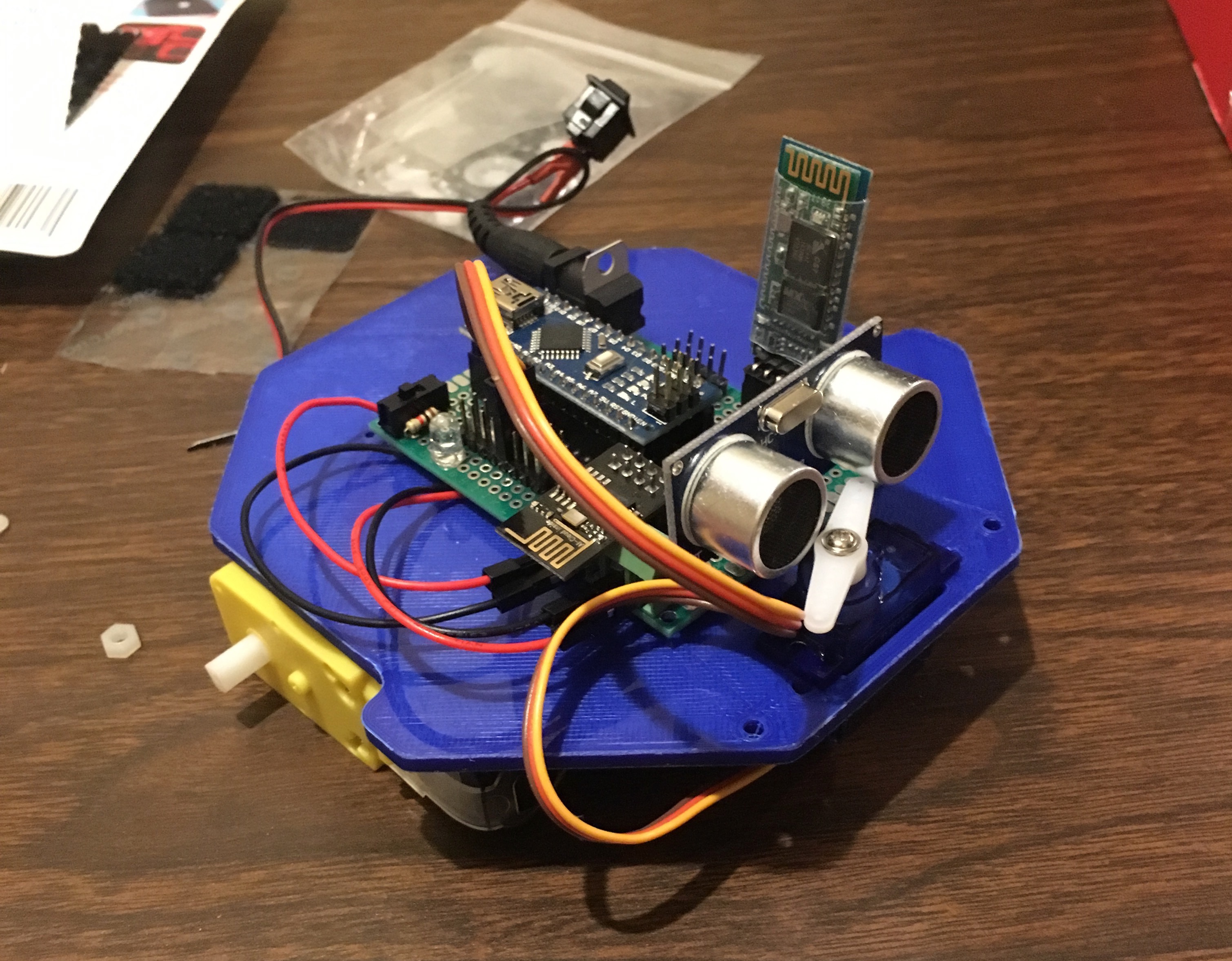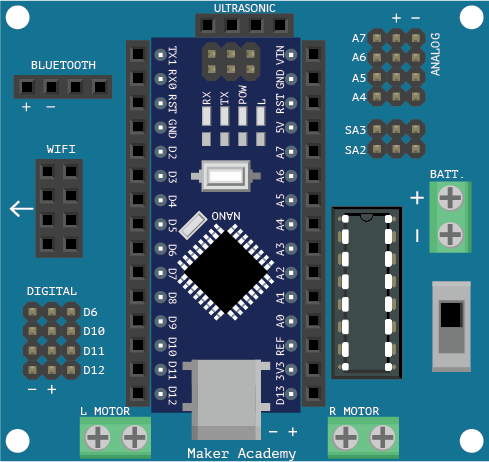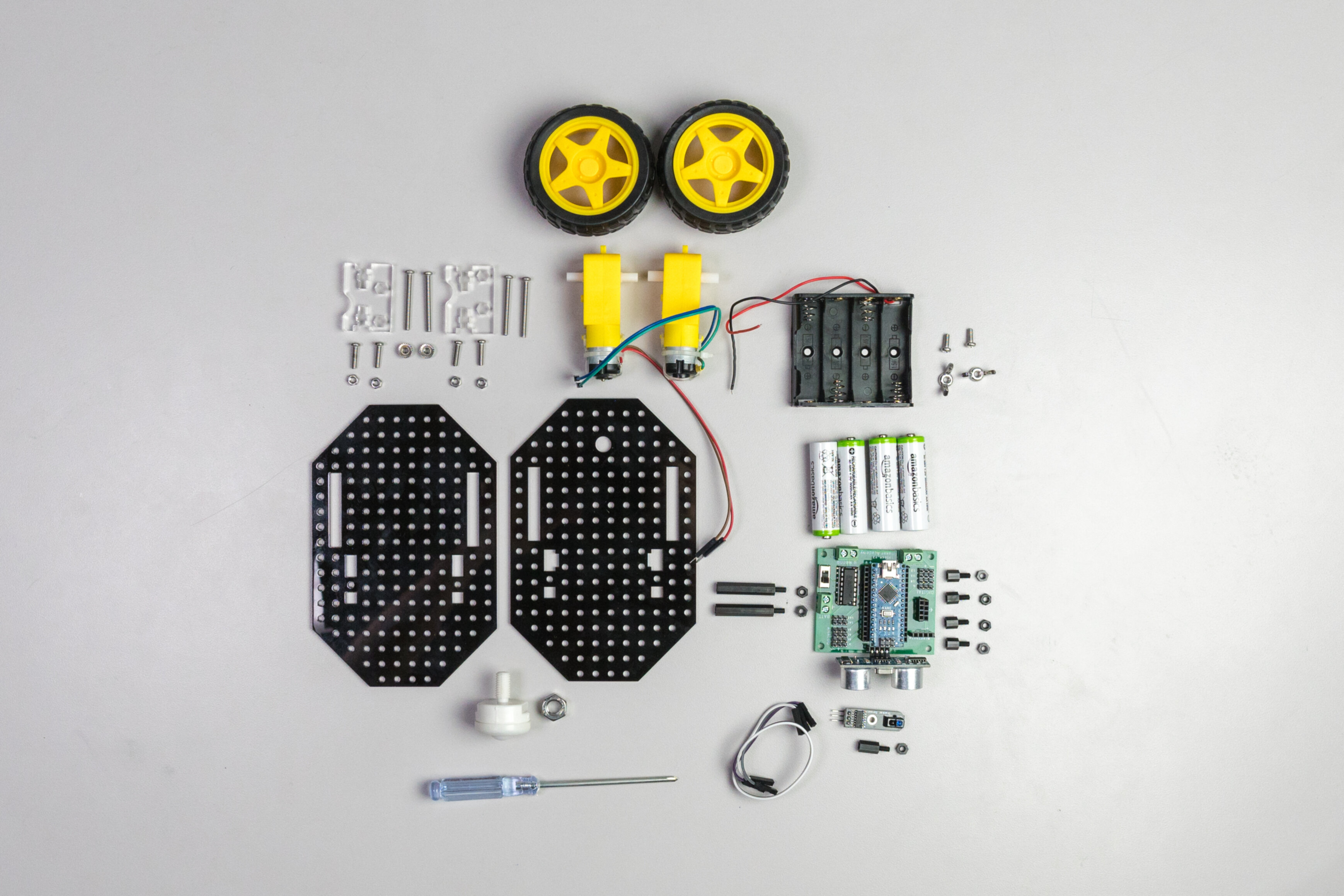Maker Academy
March 04, 2020

About the project
Robotics kits are expensive. I remember struggling to earn enough money to buy parts for projects and competitions in high school. That inspired me to build a low-cost, versatile robotics kit.
Apollo uses an Arduino Nano with the custom PCB I designed to make it easy to plug in sensors, motors, and more. I led a team of three in the design, prototyping, and manufacturing of Apollo. I established connections with manufacturers in China to produce kits which are now being used in several schools.
In addition to Apollo, we created a two-week course that introduces students to programming, robotics, and other engineering principles.
Process
With the motivation from my personal experiences, I began prototyping robotics kits. With breadboards, some CAD, 3D printing, and plenty of hot glue, I began tinkering away.

Plenty of iterations later, Apollo started coming together. I especially focused on designing a useful, custom PCB.

At the same time, I developed relationships with teachers and schools around the country to conduct interviews. Through these interviews, I learned much more about challenges faced by STEM educators. I interviewed more than 40 teachers from 6 states, collected hundreds of survey responses, and even taught about Arduino at a Make/Do conference.
In particular, I noticed many teachers mentioned difficulties around preparing curriculum, especially when teaching a new class. Many schools can't offer more STEM classes because they don't have teachers with the necessary experience.
My goal was to develop an accessible robotics kit and accompanying educational content so that anyone could learn and teach robotics with Apollo. Other organizations like Code.org have had success teaching computer science in this same fashion.
With the help of some great friends, we designed and manufactured Apollo and an accompanying two week course.
I focused on building our two websites, the PCB design,instructional design, and partnering with manufacturers. Below you can see an initial PCB schemtaic, a graphic for our lessons, and the parts required to assemble Apollo.

PCB in Eagle

Board Schematics

Apollo Parts
Learnings
The time spent building Maker Academy and Apollo were monumental for me as I learned so much about product design, team work, and develoment.
I experienced how rewarding it is to make something that helps people and see them using and enjoying it.